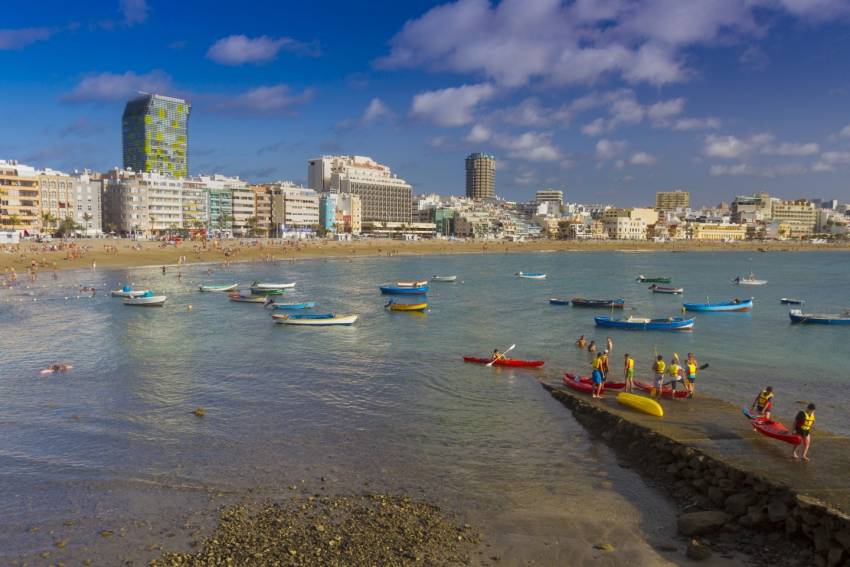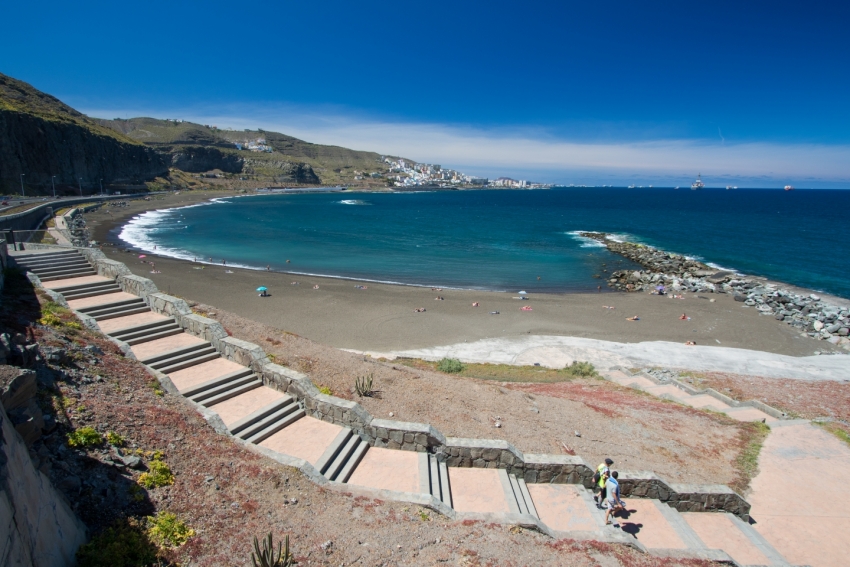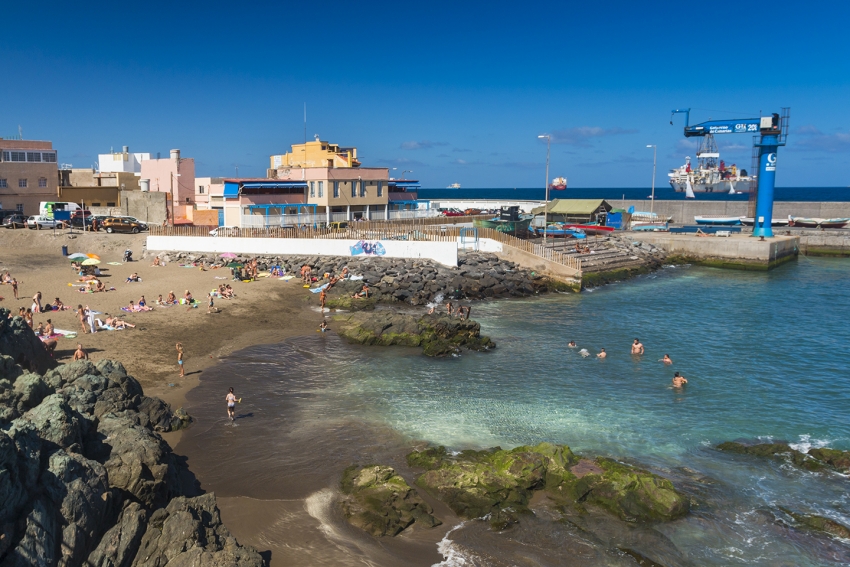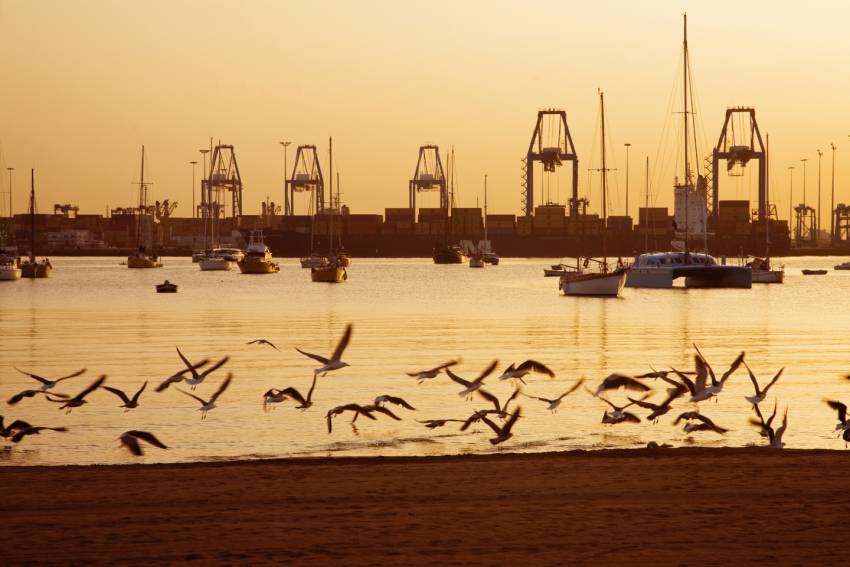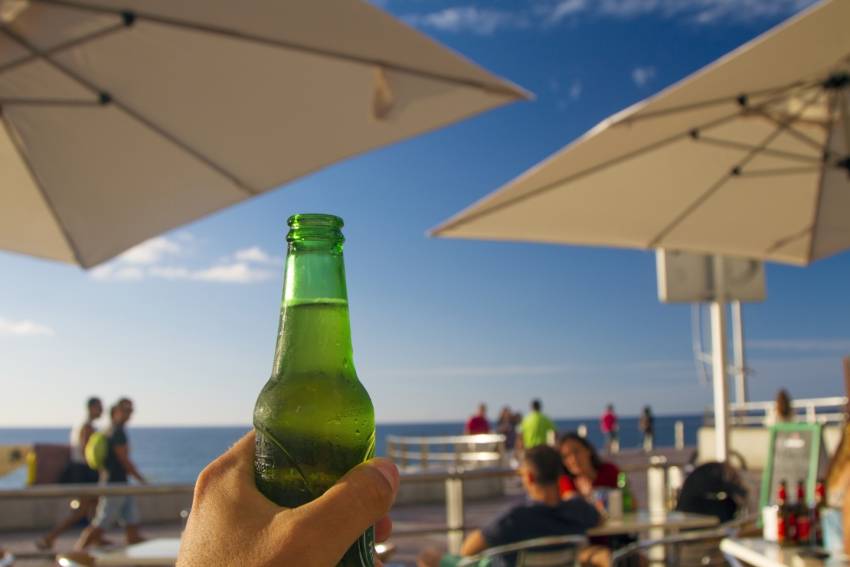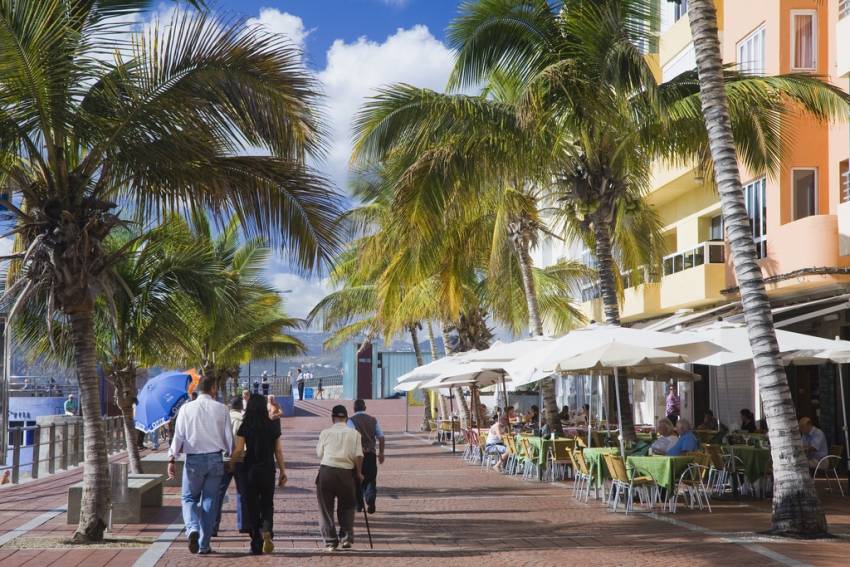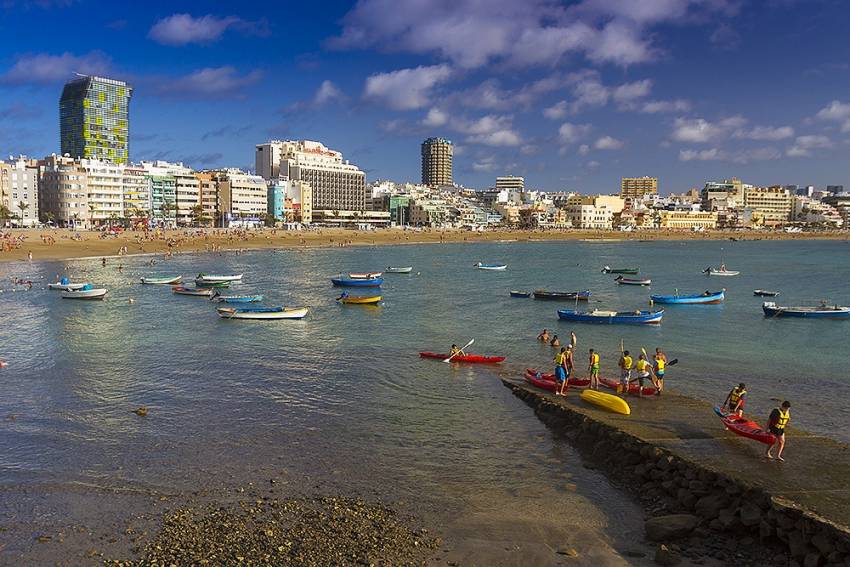When is the best time to visit Las Palmas
There’s no bad month to visit Las Palmas city as its climate is one of the world’s best, but the weather does have its quirks. Here’s a season-by-season guide to the weather in Gran Canaria’s capital.
Gran Canaria Surfing: El Confital
The fast, barrelling, right-handed point break at El Confital is one of Europe's top bodyboarding waves and hosts European tour events regularly.
Gran Canaria Surfing: El Lloret
A great wave for proficient shortboarders but not for bodyboarders or beginners: Get El Lloret wrong and you end up on the rocks.
Gran Canaria Surfing: The La Cicer Break
La Cicer isn't the best surf area in Gran Canaria, or even in the capital Las Palmas, but it is the most popular as it's where most of the island's surf schools take their groms.
The Bandama Caldera: Gran Canaria's Biggest Hole In The Ground
Visit Bandama at dawn when the caldera is full of mist and the picon lava is glowing, and it's one of the island's great spectacles. Visit any time and there's plenty to do and see from a secret bunker to classy wineries.
Seashells and Surfers at La Laja Beach in Las Palmas
Drive into Las Palmas along the coast road from the airport and you can't miss La Laja beach and its mob of seagulls. While everybody sees it, only boogie boarders and locals appreciate it.
La Puntilla In San Cristobal: Las Palmas' Smallest Sandy Beach
It's just a patch a golden sand, but La Puntilla beach in San Cristobal is sandy, sheltered and right by some of the island's best fish restaurants.
Alcaravaneras: Las Palmas' Other City Beach
Gran Canaria' other golden beach is a shadow of its former self but still a great place for a swim. It has a real local feel and a fun boardwalk (see video).
Come To Las Palmas For Culture, Stay For Food And Fun
In brochure-land Las Palmas is full or tourists wandering around cobbled streets between museums and galleries. They eat authentic Canarian food, buy arts and crafts, and enjoy themselves in a demure, cultured sort of way without breaking a sweat.
You can do Las Palmas this way if you want: As the first Spanish city founded in the New World, it's gravid with history. It was attacked by cavemen, visited by Columbus, fought off an attack by Sir Francis Drake and got sacked by Dutch privateers. Vegueta is the perfect cultural destination: Compact, well-preserved and full of small, interesting museums. However, there is also a spicier side to the city that you miss if you focus on the past.
Cocktails at sunset
Down at the modern end by the beach, tourism is about catching waves, learning Spanish, scoffing tapas and dancing salsa until you drop. Visitors are discovering Las Palmas as an exciting, modern city with Latino flair. They may wander over to Vegueta to visit Columbus' old haunts but they spend most of their time having fun in the sun.
This alternative scene isn't as new as it sounds. Until the late 1960s Las Palmas was the main tourist destination on the island and the beach was covered in Scandinavians and Brits. After the resorts in the south took off the city went to sleep, resting on its ancient laurels.
Now not then
With millions of cruise ship passengers spending a day in the city, and three million tourist a year on the island for a week or two, Las Palmas has an opportunity to remind people that it is a destination in its own right. But it's not history and architecture that will bring the visitors back, it's today's city with its beach culture, great Spanish food and laid back cool.
We believe that modern Las Palmas is missing a trick by focusing on the city it was 500 years ago rather than the city it is now. Nobody leaps out of bed in the morning because they are excited about visiting a cathedral. But sunset cocktails, tasty tapas, warm sand and Latino rhythm? That sounds like fun!
There are bars by Las Canteras that do the best caipirinhas this side of Copacabana and the streets behind the beach are full of restaurants knocking out quality Spanish tapas. And then there's live music on the beachfront every Saturday, tapas night in Vegueta on Thursdays, carnival, the surf competitions, the marathon, the food and film weekend ... Las Palmas is already happening, it's just that nobody knows about it yet!
It is time for Las Palmas to get its mojo back and remind the rest of Europe that there is a Habana on this side of the Atlantic: That's the sexy Habana with mojitos and rumba by the way, not the Habana of crumbling buildings and long dead heroes.
Las Palmas de Gran Canaria: Europe's Latino City
A city destination with miles of golden sand, bars serving local rum, a raucous month-long carnival and Christopher Columbus' house. The legendary Habana perhaps, or Colombia's exotic Cartagena de Indias? You might be surprised to find out that this exotic destination is much closer to home. Las Palmas, Europe’s secret Latino city, is just four hours flight from Britain and Germany.
Las Palmas is one of the biggest cities in Spain, boasts the best city beach in Europe and still parties like it's 1999. Its old town district is on the short-list to become a World Heritage Site and its shops are among the cheapest in Europe. Las Palmas is 'the city with the best climate in the world' according to New York's Syracuse University. Average temperatures range between 20 degrees in the winter and 26 degrees in the summer. It receives six hours of sunshine every day during the winter, ten hours in the summer.
By rights Las Palmas should be overflowing with tourists but somehow it has slipped under the radar. Overshadowed by the huge, package-tourist resorts in the south of Gran Canaria, the city hardly caters to visitors. There are no rep-led pub crawls or time-share salesmen in Las Palmas.
In February, the annual carnival takes over the city for a whole month of parades, parties and concerts. No other European city can match Las Palmas' blend of Spanish and Latino culture. Sometimes, it is like a small chunk of Cuba floated across the ocean and nobody noticed.
Las Canteras Beach Guide: How To Choose A Spot
Las Canteras beach, a 3.5km of golden sand that sweeps down one side of the city, is the jewel of Las Palmas. It's so big that each section has its own name and character. Here're the main areas from north to south.
Gran Canaria Beaches: Laid Back El Confital
Las Palmas' low key El Confital is the opposite of the famous Las Canteras Beach just across the bay.
The Weather in Gran Canaria's Resorts
Gran Canaria’s resorts, clustered along the south coast, get the most sunshine on the whole island. They are sheltred by the rest of the island and exist in a permenant bubble of blue sky.
If you come to Gran Canaria for a week’s holiday you are virtually guaranteed plenty of sun. With minimum winter temperatures over 20ºC they are the best place in Europe for topping up your winter tan.
Playa del Inglés Weather
Even when Gran Canaria’s mountains are covered in cloud Playa del Inglés is sunny. The clouds seem to burn off when they float over the Maspalomas sand dunes in front of the resort.
Minimum temperatures during the day never drop below 20ºC and rarely rise above 33ºC. Combined with the sunshine this makes Playa del Inglés a fantastic sunshine destination all year round.
For more on Playa del Inglés click here for our resort guide.
Maspalomas Weather
With it’s enormous beach and dune system Maspalomas has its own microclimate. The hot air rising from the dunes keeps the clouds off the resort and blue is the default sky colour. You can sunbathe all year round on the beach and the water is warm enough for a dip even in the winter.
Maspalomas is the Gran Canaria’s flattest resort so it does sometimes get windy on the beach. If the palm trees are swaying back and forth take a windbreak, head to sheltered Meloneras Beach at the end of the promenade, or just stay by the pool for the day.
Like the sound of Maspalomas? Click here for our resort guide.
Mogán Weather
Mogán is the prettiest resort on the island and the weather is dreamy too. It’s as sunny as it gets anywhere in Europe with 320 days per year of sunshine and is rarely windy. For the absolute best chance of getting a winter tan, Mogán is your spot.
For more on Mogán, click here.
Puerto Rico Weather
Puerto Rico is a couple of days short of being the sunniest spot in Gran Canaria behind Mogán but is still basically set to ‘permanent sunshine’. With the beach, a short walk from all the accommodation, and with stunning Amadores beach just around the headland, Puerto Rico is the sunbather’s resort.
Click here for our Puerto Rico guide.
San Agustín Weather
San Agustin gets the blue skies and hot sun of Maspalomas without the crowds. The beaches are stunning but can be windy. If you get a blowy few days head along the promenade towards Maspalomas. The sheltered beaches along the way, like Las Burras, don’t get the gusts.
Click here for our Puerto Rico guide.
Las Palmas Weather
Gran Canaria’s capital city is tucked up in the north east of the island and has much more varied weather than the resorts. It still gets seven hours of sunshine per day on average, but cloudy days are more common. During July and August Las Palmas is often cloudy due to the Panza de Burro or Donkey Belly cloud that lingers over the city.
During the winter, Las Palmas gets plenty of sunshine and is an excellent spot for a city break that includes tanning time on the beach along with great nightlife and culture.
For more on Las Palmas, click here.
The Cumbres Weather
Most of the real weather in Gran Canaria happens up in the mountains or Cumbres. In the winter the very top gets frost and even snow. Even in the summer it can be chilly in the mornings and evenings and in winter it gets bitingly cold if the clouds are low down.
The weather up top changes by the hour. Take a windcheater and a couple of extra layers if you plan to walk about. We can’t tell you how many times we have seen poor tourists in shorts shivering away up there. They always say the same thing: “Nobody told us it gets cold in Gran Canaria”.
Gran Canaria Info recommends:
- Default
- Title
- Date
- Random

